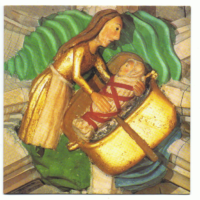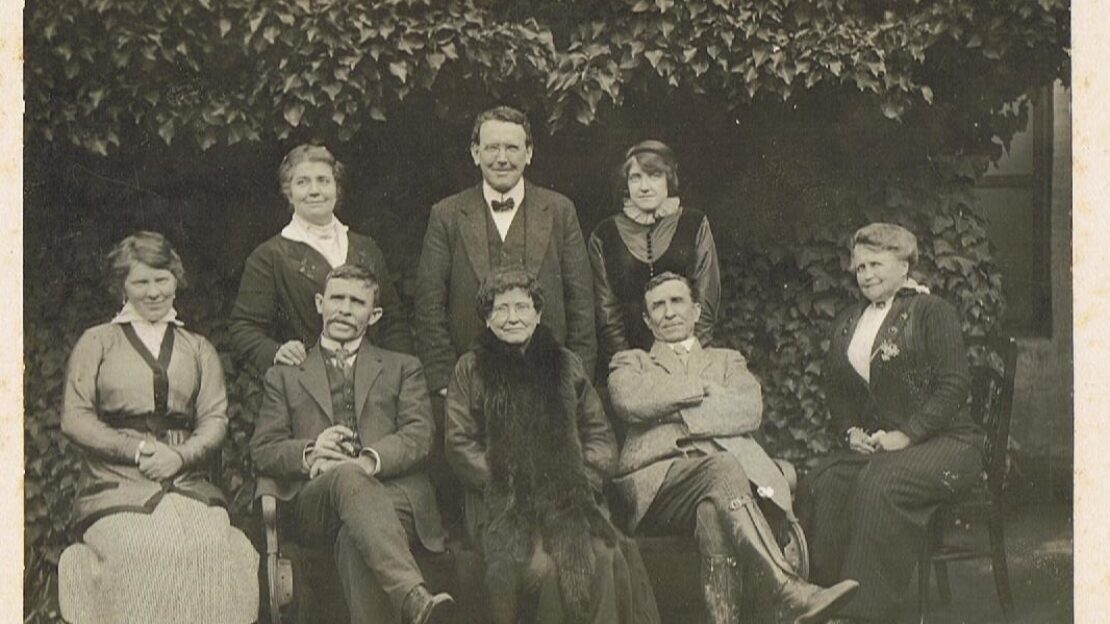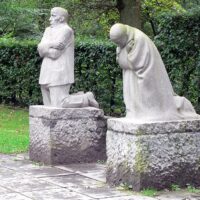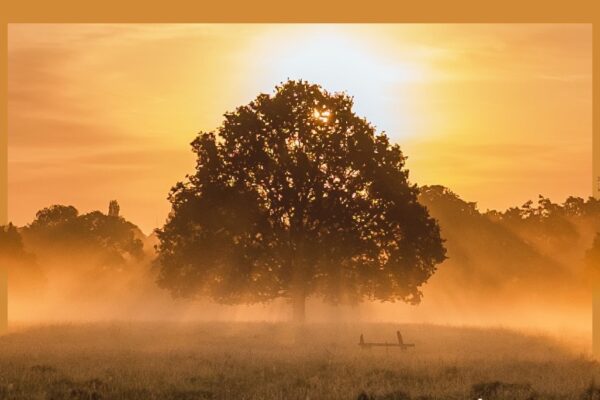 | This enchanting roof boss from Norwich Cathedral has been taken as a Christmas scene, but it’s an earlier mother and child altogether. Faced with the male child’s death sentence, Jochebed consigns her infant son Moses in a waterproofed reed basket (sic) to the Nile and its bullrushes. It’s a stressful scene despite the gleam of its figures; the blue and green waves are meant to disturb the viewer. Mothering is a risky business. |
| So soon after Anzac Day, it is worth looking at a German War cemetery on the Western Front. Not surprisingly, it’s quite different from the Allies’ ones. Here the memorial was designed and sculpted by a woman, Kathe Kollwitz. Kathe’s own son, Peter, was killed in the early days of WW1 and is buried here in Vladslo Cemetery in Belgium. In one way the figures are fixed in their grief, but it is almost impossible to adequately photograph the two together; they are both separated and united in their bereavement, their relationship is mobile, and their pain is palpable. |
|
Mother’s Day is not supposed to be about pain, but to offset the scented candles and gift-wrapped slippers of this Sunday, it must be said that mothering is not an easy affair. You commit yourself to this minute piece of human life that emerges with its own personality and unnoticed, through crying nights and scraped knees, the two of you establish a relationship that will develop and change for all the decades that you both are alive. You are thrilled by its successes; you suffer terribly when it is hurt. Then, in old age your children suffer for you.
The concept of ‘Motherhood’, the cultural process of constructing women’s identities through their capacity to nurture children, dates only from the late Eighteenth century. History has shown this narrowing focus, to a single role, to be oppressive for all women. Now, in a direction unfamiliar to my generation, Motherhood has been described as a ‘divine emotion’ or even ‘a hero’s journey’, which seems to me one-sided: centering on Mother with the child at the perimeter. Of necessity, the emphasis was on the child when some of our forebears came to Australia.
In the Nineteenth century women’s fertility rates were around six. Now the average family is 1.8. My great grandmother had nine children including seven in 10 years. She built and ran a homestead, coped with bushrangers – Grandad told me she hid any jewellery under a broody hen when she heard they were in the area, as they often were – buried two husbands and two children and after a lifetime of hard physical work died at 99 in 1924. She was celebrated for her ‘womanly grit and determination’, and the fact that she’d lived to see Home Rule in Ireland before she died.
No-one mentioned her mothering. Her seven adult children were taken for granted. Maternal grief was a private thing: her daughter-in law wrote about herself in a tiny notebook in pencil “Florence Josephine born July 26th died after 11 hours buried July 27. Heartbroken.” Nothing more was said.
Today, child rearing is at once safer and more complex; their week is crowded with constructed activity and dominated by a technology which seems infinite in its capacity for good or destruction. Mothering is expected to measure against a series of external ideals. This must be awfully hard.
As a marvellous old Nonna said to me today “God in his wisdom gave us children when we were too young to know how hard it was. But they turned out all right, didn’t they?”
By Sandy Curnow
Images: Norwich Cathedral boss image from a postcard; The Grieving Parents by Kathe Kollwitz (Source: TracesOfWar.com)
Main image: Curnow family archive.





Comments
Bren
Sandy, my mother did not fancy Mother’s’ Day., perhaps because she thought of it as a marketing affair without much substance. She would haves loved your reflection.
David Rush
Great message Sandy. And the bushrangers ! You must be related to the station master who ran down the railway line to warn the train of the siege at Glenrowan !
Replies
Sandy
Thank you Bren. Am glad that this struck a chord — and reflected something of your mother’s view. Mothering was never glamorous. And it is lifelong.
Sandy
Thank you David. Yes, that great grandmother lived up near Bookham on the southern road ( which became the Hume) south of Yass in NSW. She arrived in Melbourne from Ireland on a blistering February day in1848 to join her brother in Jugiong. She walked there behind a dray. Sic
Lived at Bookham 1857 - 1924
Of the Kelly capture — it was the schoolteacher who ran down the railway line; my husband’s great grandfather.
Add Comment